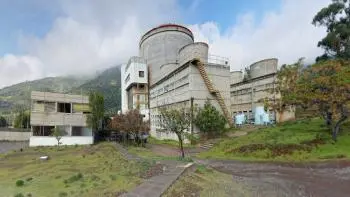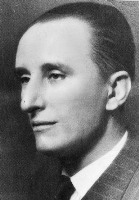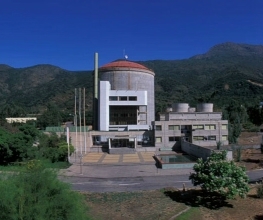
During the 70s and 80s, Chile was in a process of modernization of the electricity sector in which it opened the electricity sector to foreign investors.
During this time, Chile did not initiate any nuclear energy program at the national level unlike Argentina and Brazil.
Subsequently, the development of nuclear power energy began to be considered mainly for the following reasons:
-
The problems with gas imports from Argentina.
-
Global fossil fuel price volatility trending upward
-
The effect of a drought on the generation of hydroelectric plants and an earthquake on electricity generation in the North.
 Nuclear energy in Chile appeared for the first time in 1964 with the proposal of the project carried out by Dr. Cruz-Coke.
Nuclear energy in Chile appeared for the first time in 1964 with the proposal of the project carried out by Dr. Cruz-Coke.
What is the Chilean Nuclear Energy Commission?
The most important organization in Chile is the Chilean Nuclear Energy Commission (CCHEN), which is in charge of everything related to the peaceful use of nuclear energy.
CCHEN has two nuclear research reactors. The first Chilean experimental reactor is at the La Reina Center for Nuclear Studies, in the commune of Las Condes. The second nuclear research reactor is located at the Lo Aguirre Nuclear Studies Center, in Pudahuel.
At the moment, Chile does not have nuclear power plants to supply electricity to the electricity grid.
In addition, CCHEN carries out activities related to the training of Chilean professionals and students in the field of nuclear technology.
How has nuclear energy developed in Chile?
In Chile there are three stages in nuclear development:
1. Technological exploration of nuclear energy in Chile (1955-1964)
The first thing was to send scientists and officials to study the advances and technology of nuclear energy in other countries. Meanwhile the following events unfolded:
-
He joined the CIEN (Inter-American Nuclear Energy Commission) created to promote the cooperation of the states with the peaceful use of nuclear energy (1959).
-
Chile signs an agreement with the US to provide support in relation to nuclear energy research and becomes part of the Antarctic Treaty (1959).
-
Chile became a member of the International Atomic Energy Agency (IAEA) (1960).
-
First trainings in the clinical use of radioisotopes (1962).
-
Chile signs the treaty for the partial prohibition of tests in the atmosphere. (1963)
-
The country was elected IAEA state representing Latin America. (1963)
-
Creation of the National Nuclear Energy Commission (CNEN) of which Dr. Eduardo Cruz-Coke was the first president (1964).
2. Technological research (1964-1974)
This phase was characterized by the formation of plans, the creation of infrastructure, the signing of technical assistance agreements, the creation of advisory committees in various areas, the recruitment of Chilean or foreign professionals to dedicate themselves to the development of nuclear energy in Chile.
Among these we highlight the following facts:
Creation of the Chilean Nuclear Energy Commission
In 1965 the Chilean Nuclear Energy Commission was created as a continuation of the previous commission.
It was created as an autonomous state administration body with the objective of addressing problems related to the production, acquisition, transfer, transportation and peaceful use of atomic energy and fissile and radioactive materials.
Creation of the nuclear studies center "Central la Reina"
In 1966, the creation of a nuclear studies center "Central la Reina" stands out.
In this year there were around 120 professionals working in 29 groups of research teachers who worked in nuclear aspects of medicine, physics, biochemistry, physiology, pharmacology, veterinary medicine, pure science, pest control, etc.
Measurement of environmental radioactivity
That year, the Physics Department of the Faculty of Physical and Mathematical Sciences of the University of Chile carried out the first measurements of radioactivity in the air.
Later, CCHEN established a national program for the measurement of ionizing radiation in the environment. The measurement in the environmental radiological aspect was carried out with the help of the National Health Service, the University of Chile, the Chilean Air Force and the Federico Santa María Technical University.
At the end of 1968 the La Reina Nuclear Studies Center was created. Starting in 1968, radiological control of milk and grass was carried out. In July 1969, the environmental radioactivity laboratory was transferred to CEN La Reina.
In 1970 the first building of the CEN La Reina was completed. The first laboratories to be enabled were those for nuclear applications related to nuclear energy in industry, agriculture and hydrology, and personnel dosimetry.
 In 1972 Chile signed an agreement with Spain for collaboration in nuclear energy research for peaceful purposes. This agreement led to the participation of the Nuclear Energy Board of Spain at the beginning of CEN lo Aguirre's work.
In 1972 Chile signed an agreement with Spain for collaboration in nuclear energy research for peaceful purposes. This agreement led to the participation of the Nuclear Energy Board of Spain at the beginning of CEN lo Aguirre's work.
In 1973, CCHEN created the Institute of Nuclear Medicine (IMN) and the Army Center for Nuclear Studies (CENE). A year later, CCHEN's radiomedicine service was launched.
On June 21, 1966, CCHEN received the facilities and projects of the Army's Center for Nuclear Studies, with the aim of unifying all nuclear development in a single body.
3. Experimental level since 1983
In 1983 there were laboratories for activation analysis, delayed neutron counting uranium analysis, neutron diffraction, and x-ray diffraction, x-ray fluorescence, etc.
The "nuclear development plan" is designed with the purpose of:
-
carry out a regulation and technical regulation of nuclear safety and radioprotection
-
develop an active international relations policy
-
put facilities at pilot level in order to develop a future nuclear power program.
On May 2, 1984, the nuclear safety law was promulgated. Which 4 years later transferred the control function of the first category radioactive facilities to the CCHEN.
A year later, the "Protocol for the Cooperation of the Peaceful Uses of Nuclear Energy" was signed with the China Nuclear Corporation.
In 1994, Chile signed the convention on nuclear safety in Vienna for the prevention of a hypothetical nuclear accident.
In 1995 Chile became part of the Nuclear Non-Proliferation Treaty (NPT).